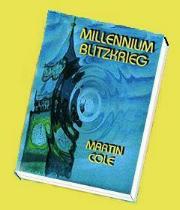The Second Elizabethan Age and the Demise of Britain.
The announcement when made by the Headmistress to the still uninformed majority of the almost entirely female school body,was met by a cacophony of wailing that left me with a confused grasp of what had occurred, believing only that the unfortunate girl's cat had died.
It was not until I returned home that evening that I learnt the King was dead. The immediate subsequent effect on my life as I recall was practically zero, mainly centred upon the need to remember to sing "Queen" instead of "King" during the national anthem, with which I had only recently become familiar, in those days through fairly frequent association and repetition.
Later I attended the Queen's Coronation, and much later still, stood with my daughter on the route for the Golden Jubilee procession, returning to London from Switzerland especially so to do.
The second Elizabethan age has figured large in my life. Few can surely doubt that the Britain into which I was born, no longer exists. Are we today still a parliamentary democracy ruled through parliament in a constitutional democracy? Much of the apparent control seems to come from abroad, with little input from those we assume to be in charge! Has this been a consequence of the deliberate mendacity of successive leaders of different political parties in recent years or something more contrived?
The noted historian Professor Norman Davies, in his recent book "Vanished Kingdoms", illustrates the combining of the houses of Saxe-Coburg and Gotha with that of Schleswig-Holstein-Sonderburg-Glücksburg accomplished by the marriage of the then Princess Elizabeth with the man we have come to know as Prince Philip.
The couple were in attendance at church in Sandringham yesterday, both clearly in robust health. Curiously it has today been decided that they will visit the Kontor at King's Lynn to celebrate the diamond jubilee of Her Majesty's accession to the throne of England, Scotland and various Commonwealth countries.
On 12th January this year I blogged on Orphans of Liberty here, and on Ironies Too, here, (with more illustrations and links) on the New Hansa.
§§§
Hanseatic Warehouse
Located on St Margaret's Lane, the Hanseatic Warehouse ( 52.7512°N 0.3946°E) is the only surviving Hansa building in England. It was constructed in 1475 as part of the Treaty of Utrecht allowing Hansa to establish a trading depot in Lynn for the first time. It was used as such until 1751, by which time the river had receded. It was then sold to Lynn merchant Edward Everard for £800. He added the Georgian town house at the East side of the building which is now known as St. Margaret's House (and Grade I listed[28]), after the nearby church.
52.7512°N 0.3946°E) is the only surviving Hansa building in England. It was constructed in 1475 as part of the Treaty of Utrecht allowing Hansa to establish a trading depot in Lynn for the first time. It was used as such until 1751, by which time the river had receded. It was then sold to Lynn merchant Edward Everard for £800. He added the Georgian town house at the East side of the building which is now known as St. Margaret's House (and Grade I listed[28]), after the nearby church.In 1971 it was renovated as part of a preservation project and converted into offices by the Norfolk County Council. It is currently used by the council for various functions, including weddings, as it houses Lynn's register office.
The building is also known as the Kontor.[29]
§§§
The plaque pictured below (also taken from Wikipedia) is at Cannon Street Station, also highlights some little known facts about the original Hansa's role in the City of London:
Link to a readable version on Wikipedia:
Inter alia it reads "To celebrate sixty years of peace between the peoples of Britain and Germany.
TO COMMEMERATE six hundred years during which some 400 Hanseatic merchants inhabited peaceably in the City of London from the XIII the to the XIX th centuries a German self-governing enclave on this site known as the Steelyard, Stilliarde or "Stalhof"
This posting was first published to Orphans of Liberty
Labels: Diamond Jubilee, HM Queen Elizabeth II, New Hansa




0 Comments:
Post a Comment
<< Home